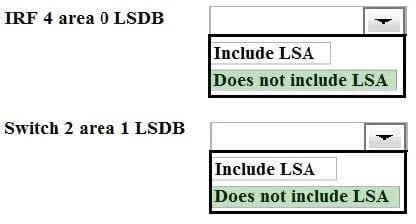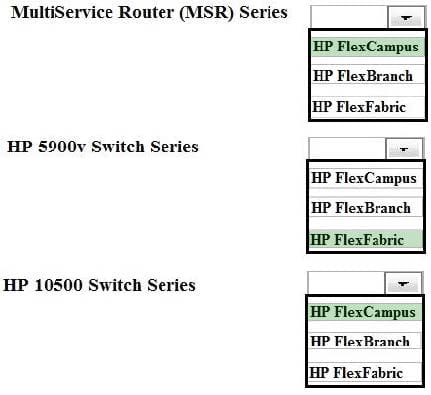HP0-Y47 Online Practice Questions and Answers
Refer to the exhibit. Exhibit 1

Exhibit 2

In exhibit 1, all infrastructure devices are implementing OSPF on the interfaces. Exhibit 1 also shows settings for OSPF areas. Exhibit 2 shows some additional OSPF settings IRF 1.
The network administrator enters this command on IRF 4:
[ IRF4-ospf-1-area-0.0.0.2 ] abr-summary 10.2.0.0 16
The administrator verifies that the solution is functioning correctly. Indicate whether the link state database (LSDB) on a device should include an LSA for 10.2.0.0/16.
Hot Area:
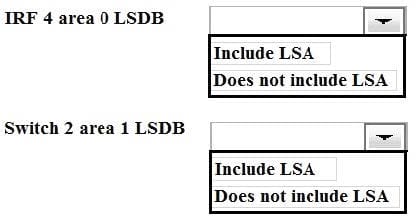
Hot Area:
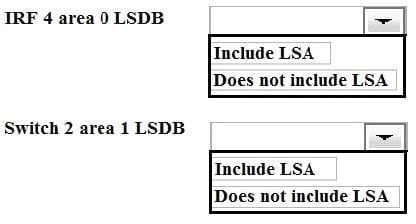
Match the HP network infrastructure product to its HP FlexNetwork component.
Hot Area:
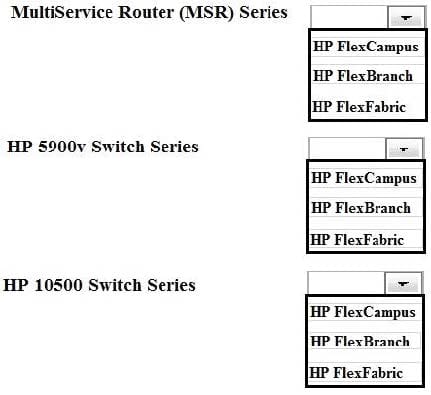
Hot Area:
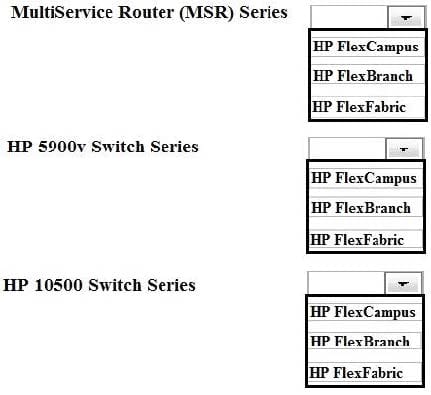
Refer to the exhibit.

Switch 3 runs Rapid Per-VLAN Spanning Tree Plus (RPVST+), which is enabled on VLANs 1-4. Select the correct number for each of these parameters.
Hot Area:

Hot Area:

A network administrator is completing an In-Service Software Upgrade (ISSU) for an Intelligent Resilient Framework (IRF) virtual devices. The device has two members. Each member has one management module. Member1 is currently the master. The administrator has initiated a rollback time for this upgrade.
When should the administrator accept the upgrade?
A. After upgrading both members of the IRF virtual device
B. After checking the new software's ISSU compatibility but before upgrading either member
C. After upgrading member 1 but before switching over to and upgrading member 2
D. After upgrading and switching over to member 2 but before upgrading member 1
Refer to the exhibit.

Switch 1 and switch 2 run open Shortest Path First (OSPF) on all VLANs. Both switches establish an OSPF adjacency to a router at the main data center. Exhibit shows shoes some virtual Routing Redundancy Protocol (VRRP) and OSPF settings on Switch 1 during normal operation.
How can a network administrator increase the resiliency of this solution?
A. Implement Bidirectional Forwarding Detection (BFD) on the peer keep alive link between the core switches.
B. Change the VLAN 10 subnet to a /24 subnet and enable VRRP on it. Place Switch 2's link to the main data center in this subnet.
C. Make sure that, in each VRRP instance, each switch has a VRRP preempt delay of several minutes.
D. Configure Switch 1 as an OSPF graceful restart helper in VLAN 11 and Switch 2 as a helper in VLAN 10
A network administrator wants to configure Open Shortest Path (OSPF) MD5 authentication on VLAN 100 on an HP ProVision switch. The administrator has created a global MD5 key chain with an ID and key string that matches the neighbor's. which additional step must the administrator complete to accomplish this?
A. Set OSPF authentication to MD5 mode in the OSPF area settings
B. Activate MD5 key rotation globally
C. Enable MD5 key rotation globally
D. Assign this MD5 key to OSPF VLAN 100
In which components of HP FlexNetwork solutions can Intelligent Resilient Framework (IRF) play a role?
A. IRF can operate at any layer of both campus and data center solutions.
B. IRF can operate at the access layer of both campus and data center solutions. It cannot operate at the core.
C. IRF can operate within data center solutions but not in campus solutions.
D. IRF can operate at the core of both campus and data center solutions. It cannot operate at the access layer.
Refer to the exhibit.
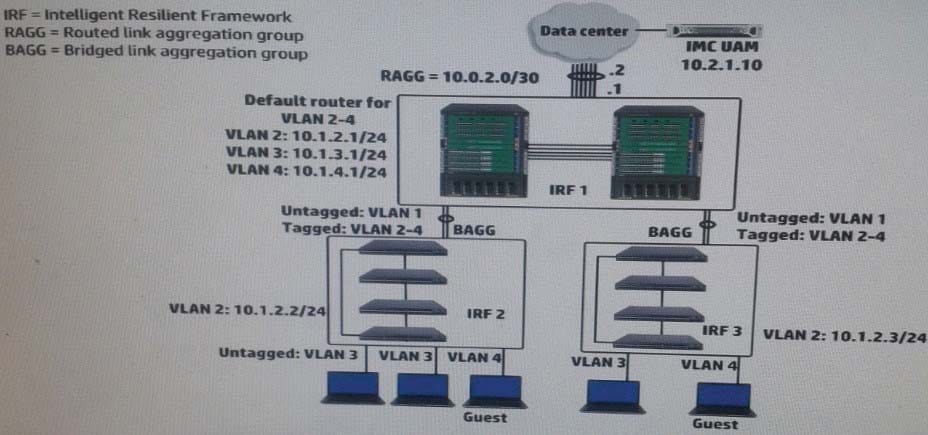
A company has a functional multicast routing solution, which routes multicasts from the data center users in VLAN3 and VLAN4. Users in VLAN 3 and VLAN 4 sometimes register for some of the same multicast. The network administrator wants to prevent duplicate multicasts on the link between the core IRF virtual switch and the access layer IRF virtual switches.
What should the administrator do to accomplish this goal?
A. Enable IGMP snooping on VLAN 3 and VLAN4 (Layer 2) on the core switch and on the access layer switches.
B. Create Layer 3 interfaces for VLAN 3 and VLAN 4 on the access layer switches, and enable IGMP on the interfaces.
C. Enable Multicast VLAN and IGMP snooping on VLAN 3 on the access layer switches, and associate VLAN 4 as a sub-VLAN.
D. Create Layer 3 interfaces for VLAN 3 and VLAN 4 on the access layer switches, and enable PIM on the interfaces.
Refer to the exhibit.

IRF 3 and Switches 1, 2 and 4 are successfully implementing OSPF on the interfaces shown in the exhibit. Then IRF 3's 10.1.10/24 link fails. Connectivity between Server 1 and Server 2 is disrupted for about 30 seconds. What can the network administrator do to prevent this issue from occurring again?
A. Enable opaque LSAs on each of the switches; set the OSPF graceful restart mode to IETF mode on at least IRF 3.
B. Set the OSPF dead timer on each of the switches to equal the hello timer
C. Set up OSPF Bidirectional Forwarding Detection (BFD) on each switch VLAN 10 interface.
D. On IRF 3, set up Bidirectional Forwarding Detection (BFD) Multi-Active Detection (MAD) on a dedicated link between the members.
Refer to the exhibit. Exhibit 1

Exhibit 2

Client 1 is transmitting traffic to the data center. Switch 3 transmits the traffic on the link to Switch 1. How does Switch 1 handle the traffic received from Client 1?
A. It forwards the traffic over the ISC to Switch 2.
B. It routes the traffic and forwards it towards the data center.
C. It drops the traffic.
D. It forwards the traffic over the keepalive link to Switch 2.
